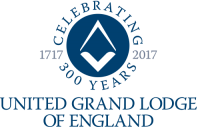Aircraftman 1 Raymond Rawling
Raymond Rawling was a Freemason, member of Lodge Temperance 2557, a Hosier’s manager, Aircraftman in the Royal Navy Air Service and one of our forgotten war heroes. He is not listed in the Lodge Temperance WW1 Roll of Honour although the Lodge registers clearly show he was on war service.
Raymond was proposed by Wbro J. Harris, I.P.M. and seconded by R. Urquhart, S. W. as a fit a proper person to be made a Mason at the Lodge Temperance 2557 meeting held at the Assembly Rooms, Newcastle Upon Tyne on the 17th January 1916. He was recorded as a 27 year old Hosier’s Manager, living at 64, Dryden Road, Low Fell, Gateshead. A successful ballot was held on the 21st February and on the 19th June 1916 he was initiated into the Mysteries and Privileges of Ancient Freemasonry. On the 18th September he was passed to the second or Fellowcraft degree and raised to the Sublime degree of a Master Mason on the 20th November 1916.
Raymond was the son of William Rawling (1860 – 1935), a railway employee from Sedgefield, Co. Durham who started as a clerk and worked his way up to railway traffic agent, and Jane Gibson from Bradbury, Co. Durham. They were married in Sedgefield on 25th February 1886 and had two children:
- Earnest Reginald (b 1887, Sedgefield – 1893)
- Raymond (b 3 April 1888, Thornley, Co. Durham)
In the 1911 census taken in April of that year, Raymond is a Hosier, lodging in a family home in York Street, Wesgate, Newcastle. His parents continue to live in Thornley, Co. Durham.
Raymond enlisted with the Royal Navy on the 20th June 1917 for the period of the war and was immediately assigned as an Aircraftman II, service number F31330 in the Royal Navy Air Service. He did his basic training on the President II, a shore based Navy establishment, before being posted to the airship base at RNAS Pulham, Norfolk. This was used as a base for airship coastal patrols to counter the German submarine campaign.
After serving for 3 months at RNAS Pulhan, in August 1917, he was transferred to RNAS Leysdown, Kent, a satellite airfield of RNAS Eastchurch on the Isle of Sheppey. With the expansion of the Naval Flying School at Eastchurch, Leysdown was used for emergency forced landings until 1917 when aircraft bombing and gunnery ranges were established offshore. It was then developed as an aerodrome and aircraft of the Gunnery School were moved from Eastchurch. The school catered for around 50 pupils giving pilot and observer cadets training in gunnery and bomb dropping, wireless operators and engineer mechanics also attended the gunnery courses. It was during this time he was promoted to Aircraftman I.
On 1 April 1918, the Royal Naval Air Service and the Royal Flying Corps amalgamated creating the Royal Air Force. The station at Leysdown was transferred to the newly formed Royal Air Force and was re-designated as the Pilots and Observers Aerial Gunnery Fighting School (SE Area). Raymond was transferred to the Royal Air force at the same time.
After eight months at RAF Leysdown he returned to RAF Pulham for a short while before being posted to RAF West Drayton and then Clipstone Camp, near Mansfield, Nottinghamshire, which in the final years of the war was used as a demobilisation camp . He was transferred to the RAF Reserve on the 12 April 1919 before being discharged on the 30th April 1920. He was awarded the British War Medal.
It is likely that Raymond married Ethel Cummings in 1930 although without sending for the marriage certificate this cannot be confirmed. He died in Yorkshire in 1966 at the age of 78.



